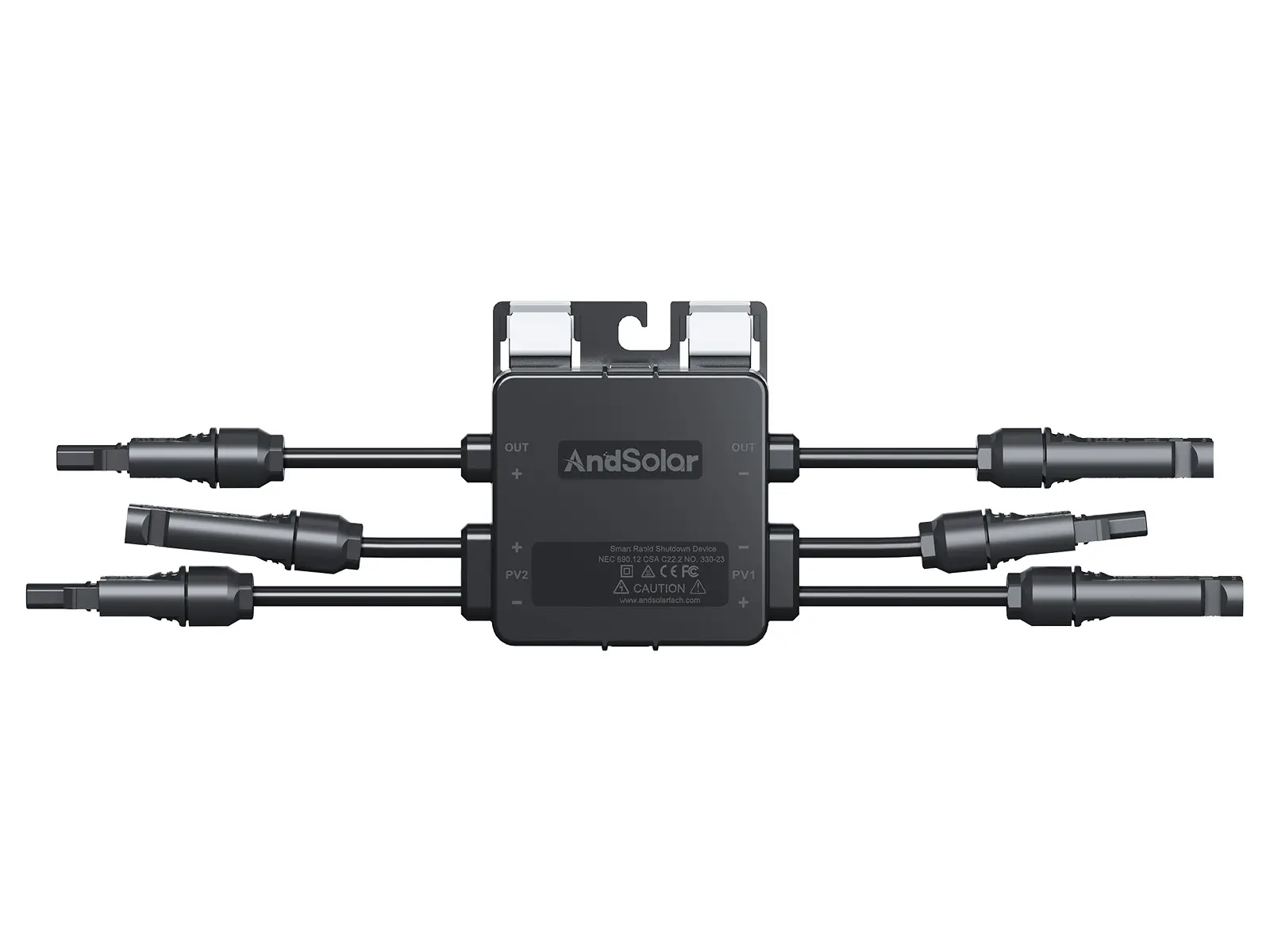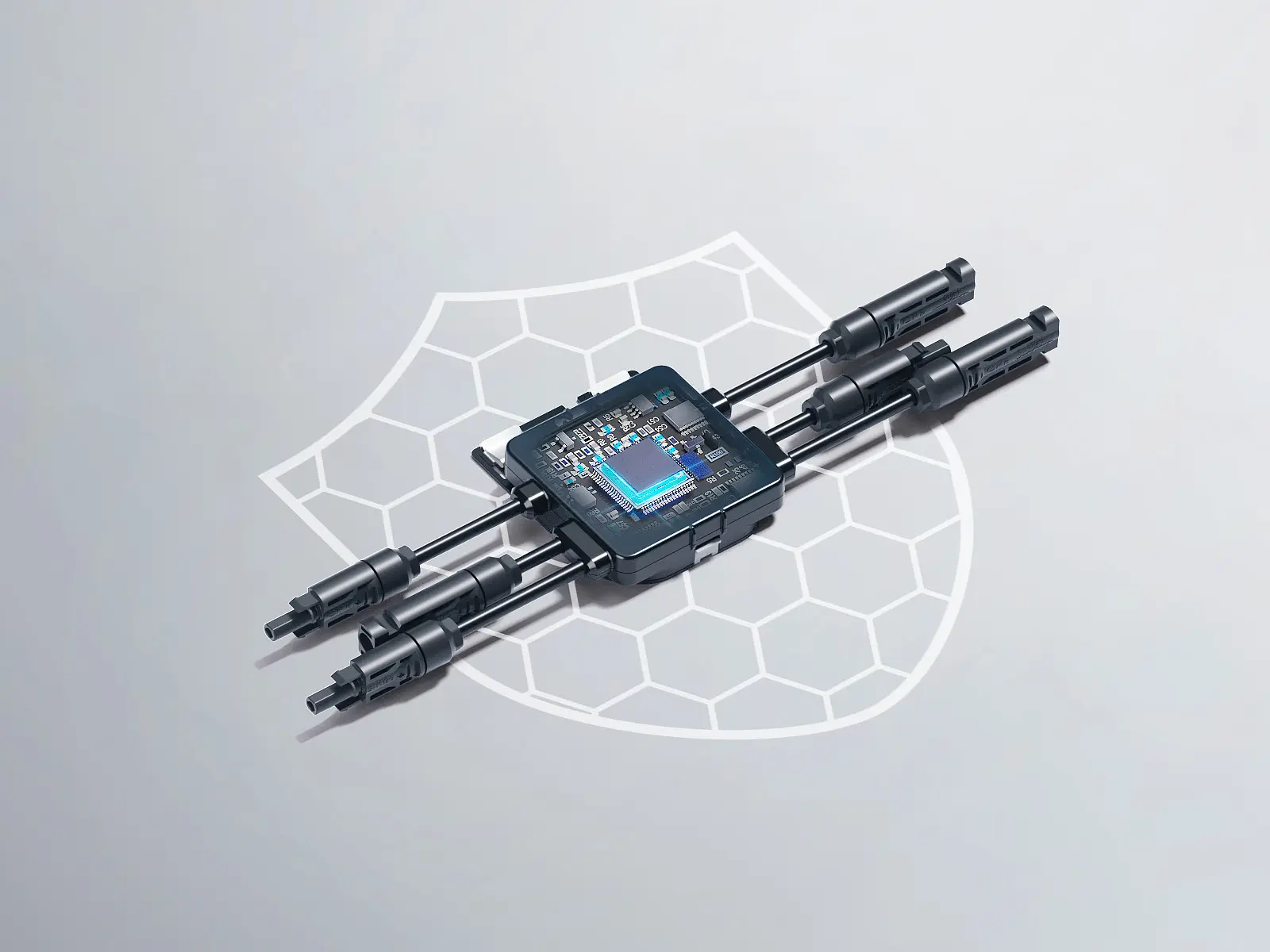การเปลี่ยนแปลงระบบป้องกันพลังงานแสงอาทิตย์ผ่านการรวมระบบความปลอดภัยขั้นสูง
ภูมิทัศน์ของพลังงานหมุนเวียนได้ประสบกับการเปลี่ยนแปลงอย่างน่าทึ่ง โดยเฉพาะในด้านความปลอดภัยของระบบพลังงานแสงอาทิตย์ เมื่อการติดตั้งระบบพลังงานแสงอาทิตย์มีความแพร่หลายมากขึ้นเรื่อย ๆ ในภาคครัวเรือนและภาคธุรกิจ การผสานรวม ระบบปิดเครื่องอย่างรวดเร็ว เข้ากับความสามารถในการตรวจสอบแบบเรียลไทม์ ถือเป็นก้าวสำคัญอย่างยิ่งต่อการป้องกันระบบโฟโตโวลเทก (Photovoltaic) การรวมเทคโนโลยีเหล่านี้เข้าด้วยกัน กำลังปฏิวัติวิธีการที่เราดำเนินการด้านความปลอดภัยในการติดตั้งระบบพลังงานแสงอาทิตย์ การบำรุงรักษา และประสิทธิภาพโดยรวมของระบบ
การผนึกกำลังระหว่างฟังก์ชันการปิดระบบอย่างรวดเร็วกับระบบตรวจสอบอย่างต่อเนื่องได้สร้างระดับการป้องกันที่ไม่เคยมีมาก่อนสำหรับติดตั้งพลังงานแสงอาทิตย์ เทคโนโลยีที่ทำงานร่วมกันนี้ไม่เพียงแต่เพิ่มความปลอดภัยของระบบพลังงานแสงอาทิตย์ แต่ยังทำให้เจ้าของทรัพย์สินและบุคลากรด้านการบำรุงรักษามีความอุ่นใจมากขึ้น การพัฒนาของมาตรการความปลอดภัยเหล่านี้สะท้อนให้เห็นถึงความมุ่งมั่นของอุตสาหกรรมในการสร้างโซลูชันพลังงานหมุนเวียนที่เชื่อถือได้และปลอดภัยยิ่งขึ้น
รากฐานของระบบป้องกันพลังงานแสงอาทิตย์ในยุคปัจจุบัน
การทำความเข้าใจเทคโนโลยีการปิดระบบอย่างรวดเร็ว
เทคโนโลยีการปิดระบบอย่างรวดเร็วทำหน้าที่เป็นหัวใจสำคัญของระบบความปลอดภัยพลังงานแสงอาทิตย์ในยุคปัจจุบัน คุณสมบัติที่สำคัญนี้ช่วยให้สามารถตัดกระแสไฟฟ้าจากแผงเซลล์แสงอาทิตย์ได้อย่างรวดเร็วเมื่อมีความจำเป็น โดยเฉพาะในสถานการณ์ฉุกเฉิน ระบบจะทำให้ระดับแรงดันไฟฟ้าลดลงสู่เกณฑ์ที่ปลอดภัยภายในไม่กี่วินาที เพื่อปกป้องเจ้าหน้าที่กู้ภัยและช่างเทคนิคที่อาจต้องเข้าไปยังหลังคาหรือบริเวณติดตั้งแผงโซลาร์เซลล์
เทคโนโลยีนี้ทำงานผ่านอิเล็กทรอนิกส์ขั้นสูงที่สามารถแยกแผงเดี่ยวหรือชุดแผงทั้งหมดได้อย่างรวดเร็ว เมื่อถูกเปิดใช้งาน กลไกการปิดระบบอย่างรวดเร็วจะลดแรงดันในตัวนำกระแสตรง (DC) ให้เหลือ 30 โวลต์หรือน้อยกว่า ซึ่งช่วยลดความเสี่ยงจากอันตรายด้านไฟฟ้าได้อย่างมาก ความสามารถนี้มีความสำคัญเพิ่มขึ้นเรื่อย ๆ เนื่องจากการติดตั้งระบบพลังงานแสงอาทิตย์มีความซับซ้อนและแพร่หลายมากยิ่งขึ้น
ส่วนประกอบการตรวจสอบแบบเรียลไทม์
การผสานรวมระบบตรวจสอบแบบเรียลไทม์เข้ามา ทำให้ความปลอดภัยของระบบพลังงานแสงอาทิตย์มีความซับซ้อนและแม่นยำมากยิ่งขึ้น ระบบเหล่านี้ทำการติดตามพารามิเตอร์ต่าง ๆ อย่างต่อเนื่อง รวมถึงระดับแรงดัน การไหลของกระแสไฟฟ้า และตัวชี้วัดประสิทธิภาพของระบบ เซ็นเซอร์ขั้นสูงและโปรโตคอลการสื่อสารช่วยให้สามารถตรวจจับปัญหาที่อาจเกิดขึ้นได้ทันที ตั้งแต่ปัญหาประสิทธิภาพลดลงเล็กน้อย ไปจนถึงประเด็นด้านความปลอดภัยที่ร้ายแรง
โซลูชันการตรวจสอบที่ทันสมัยใช้แพลตฟอร์มบนคลาวด์ที่ให้การเข้าถึงสถานะระบบและข้อมูลประสิทธิภาพได้ทันที การมองเห็นแบบเรียลไทม์นี้ช่วยให้สามารถบำรุงรักษาเชิงรุก และตอบสนองต่อปัญหาความปลอดภัยได้อย่างรวดเร็ว ส่งผลให้อายุการใช้งานของระบบพลังงานแสงอาทิตย์ยืดยาวขึ้น พร้อมรักษามาตรฐานความปลอดภัยสูงสุด

ประโยชน์ของการรวมระบบเพื่อการป้องกันที่ดียิ่งขึ้น
ระบบการสื่อสารที่ไร้รอยต่อ
ความร่วมมือระหว่างระบบปิดเครื่องอย่างรวดเร็วและระบบตรวจสอบ สร้างเครือข่ายการสื่อสารที่แข็งแกร่ง ซึ่งช่วยยกระดับความปลอดภัยของระบบพลังงานแสงอาทิตย์โดยรวม ระบบแบบบูรณาการเหล่านี้ทำให้สามารถแจ้งเตือนอันตรายที่อาจเกิดขึ้นได้ทันที และดำเนินการตามมาตรการความปลอดภัยโดยอัตโนมัติ การไหลเวียนของข้อมูลอย่างต่อเนื่องทำให้มั่นใจได้ว่าผู้ปฏิบัติงานสามารถตัดสินใจได้อย่างรวดเร็วและมีประสิทธิภาพ
โปรโตคอลการสื่อสารขั้นสูงช่วยให้สามารถแลกเปลี่ยนข้อมูลแบบสองทิศทาง ทำให้สามารถจัดการระบบจากระยะไกล และตอบสนองต่อปัญหาด้านความปลอดภัยได้ทันที ระดับของการเชื่อมต่อนี้ทำให้สามารถควบคุมระบบที่ติดตั้งพลังงานแสงอาทิตย์ได้อย่างไม่เคยมีมาก่อน ทำให้สามารถแก้ไขปัญหาที่อาจเกิดขึ้นได้ก่อนที่จะลุกลามไปเป็นปัญหาร้ายแรง
ความสามารถในการบำรุงรักษาเชิงคาดการณ์
การรวมกันของระบบตรวจสอบแบบเรียลไทม์กับฟังก์ชันการทำงานในการปิดระบบอย่างรวดเร็ว ช่วยให้สามารถดำเนินกลยุทธ์การบำรุงรักษาเชิงคาดการณ์ที่ซับซ้อนได้ โดยการวิเคราะห์ข้อมูลประสิทธิภาพและรูปแบบพฤติกรรมของระบบ ระบบแบบบูรณาการเหล่านี้สามารถตรวจพบปัญหาด้านความปลอดภัยที่อาจเกิดขึ้นได้ก่อนที่จะปรากฏชัดเจน การดำเนินการเชิงรุกนี้ช่วยลดความเสี่ยงของการทำงานผิดพลาดของระบบและเหตุการณ์ด้านความปลอดภัยอย่างมีนัยสำคัญ
อัลกอริธึมการเรียนรู้ของเครื่องประมวลผลข้อมูลการดำเนินงานจำนวนมากเพื่อตรวจจับการเปลี่ยนแปลงเล็กน้อยที่อาจบ่งชี้ถึงปัญหาที่กำลังเกิดขึ้น ความสามารถในการคาดการณ์นี้ทำให้ทีมงานบำรุงรักษาสามารถแก้ไขปัญหาด้านความปลอดภัยที่อาจเกิดขึ้นได้ในช่วงเวลาที่กำหนดไว้สำหรับการบำรุงรักษา แทนที่จะต้องตอบสนองต่อสถานการณ์ฉุกเฉิน
กลยุทธ์การดำเนินการเพื่อประสิทธิภาพสูงสุด
ข้อพิจารณาในการออกแบบระบบ
การผสานระบบปิดการทำงานเร็วและระบบตรวจสอบเข้าด้วยกันอย่างมีประสิทธิผลเริ่มต้นด้วยการออกแบบระบบอย่างรอบคอบ วิศวกรจำเป็นต้องพิจารณาปัจจัยต่าง ๆ เช่น ความเข้ากันได้ของชิ้นส่วน การเลือกโปรโตคอลการสื่อสาร และสถาปัตยกรรมของระบบโดยรวม ควรวางความสำคัญในความสำรองซ้ำ (redundancy) ของระบบความปลอดภัยที่สำคัญในช่วงการออกแบบ โดยยังคงประสิทธิภาพและต้นทุนที่เหมาะสมของระบบ
การเลือกและการติดตั้งชิ้นส่วนอย่างเหมาะสมจะช่วยให้ระบบปิดการทำงานเร็วและระบบตรวจสอบทำงานได้อย่างมีประสิทธิภาพ รวมถึงการติดตั้งเซ็นเซอร์ อุปกรณ์สื่อสาร และกลไกการปิดระบบอย่างมีแบบแผน เพื่อสร้างเครือข่ายความปลอดภัยที่ครอบคลุมตลอดทั้งพื้นที่ติดตั้งแผงโซลาร์
แนวทางปฏิบัติที่ดีที่สุดในการติดตั้ง
การติดตั้งโดยผู้เชี่ยวชาญมีความสำคัญอย่างยิ่งต่อการรักษาระบบความปลอดภัยแบบบูรณาการให้มีประสิทธิภาพ ช่างติดตั้งที่ได้รับการรับรองต้องปฏิบัติตามแนวทางที่เข้มงวดเกี่ยวกับการจัดวางชิ้นส่วน การเดินสายไฟ และการทดสอบระบบ การติดตั้งที่ถูกต้องจะทำให้มั่นใจได้ว่าทั้งระบบปิดเร็ว (rapid shutdown) และระบบตรวจสอบทำงานตามวัตถุประสงค์ เพื่อให้การป้องกันสูงสุดสำหรับการติดตั้ง
การตรวจสอบและทดสอบระบบเป็นประจำช่วยรักษาประสิทธิภาพของฟีเจอร์ด้านความปลอดภัยให้คงอยู่ตลอดเวลา ซึ่งรวมถึงการตรวจสอบเป็นระยะของระบบสื่อสาร การปรับเทียบเซนเซอร์ และระยะเวลาในการตอบสนองของกลไกการปิดระบบ
แนวพัฒนาในอนาคตของการรวมระบบความปลอดภัยสำหรับพลังงานแสงอาทิตย์
เทคโนโลยีที่เกิดขึ้นใหม่
อนาคตของระบบความปลอดภัยสำหรับพลังงานแสงอาทิตย์มีแนวโน้มสู่การผสานรวมและการทำงานที่ซับซ้อนมากยิ่งขึ้น เทคโนโลยีใหม่ๆ เช่น ปัญญาประดิษฐ์ (AI) และการวิเคราะห์ขั้นสูง กำลังถูกนำมาใช้ในระบบตรวจสอบ เพื่อให้สามารถดำเนินการตามมาตรการความปลอดภัยที่ทันสมัยและคาดการณ์เหตุการณ์ล่วงหน้าได้อย่างมีประสิทธิภาพมากขึ้น นวัตกรรมเหล่านี้จะช่วยเสริมศักยภาพในการป้องกันและตอบสนองต่อเหตุการณ์ด้านความปลอดภัยที่อาจเกิดขึ้นได้ดียิ่งขึ้น
การพัฒนาโปรโตคอลการสื่อสารและเทคโนโลยีเซ็นเซอร์ใหม่ๆ ยังคงดำเนินต่อไปเพื่อปรับปรุงความเร็วและความน่าเชื่อถือของระบบความปลอดภัย ความก้าวหน้าเหล่านี้จะนำไปสู่การป้องกันที่ตอบสนองได้รวดเร็วและมีประสิทธิภาพยิ่งขึ้นสำหรับระบบติดตั้งพลังงานแสงอาทิตย์
การเปลี่ยนแปลงของกฎระเบียบ
เมื่อเทคโนโลยีพลังงานแสงอาทิตย์ยังคงพัฒนาอย่างต่อเนื่อง ข้อกำหนดด้านกฎระเบียบสำหรับระบบความปลอดภัยก็มีการเปลี่ยนแปลงตามความก้าวหน้าดังกล่าว มาตรฐานอุตสาหกรรมกำลังได้รับการอัปเดตให้สอดคล้องกับความสามารถใหม่ๆ และเพื่อให้มั่นใจว่าการปฏิบัติตามมาตรการความปลอดภัยจะเป็นไปอย่างต่อเนื่องและสม่ำเสมอในทุกการติดตั้ง การเปลี่ยนแปลงด้านกฎระเบียบนี้จึงเป็นแรงผลักดันสำคัญที่ทำให้เกิดนวัตกรรมอย่างต่อเนื่องในระบบความปลอดภัยแบบบูรณาการ
คาดว่ากฎระเบียบในอนาคตจะให้ความสำคัญมากขึ้นกับการรวมระบบและคุณสมบัติด้านความปลอดภัยอัตโนมัติ ซึ่งจะส่งเสริมการพัฒนาโซลูชันด้านความปลอดภัยอย่างครบวงจรยิ่งขึ้น
คำถามที่พบบ่อย
ระบบปิดตัวเร็วตอบสนองต่ออันตรายที่อาจเกิดขึ้นได้เร็วเพียงใด
โดยทั่วไป ระบบปิดตัวเร็วในยุคปัจจุบันจะตอบสนองภายในไม่กี่วินาทีหลังจากตรวจพบอันตราย โดยลดแรงดันของระบบลงสู่ระดับที่ปลอดภัยตามข้อกำหนดของ NEC เวลาในการตอบสนองที่แน่นอนอาจแตกต่างกันไปขึ้นอยู่กับการตั้งค่าของระบบและองค์ประกอบเฉพาะที่ใช้ แต่โดยทั่วไปจะเกิดขึ้นภายใน 30 วินาทีหรือน้อยกว่านั้น
สิ่งที่เกิดขึ้นกับความสามารถในการตรวจสอบระหว่างเหตุการณ์การปิดตัวเร็วคืออะไร
ระหว่างเหตุการณ์การปิดตัวเร็ว ระบบตรวจสอบยังคงทำงานต่อไป เพื่อให้ข้อมูลสำคัญเกี่ยวกับสถานะของระบบและการดำเนินการปิดตัวลง การตรวจสอบอย่างต่อเนื่องนี้ทำให้มั่นใจได้ว่าโปรโตคอลความปลอดภัยถูกดำเนินการอย่างถูกต้อง และให้ข้อมูลที่มีค่าสำหรับการวิเคราะห์หลังเกิดเหตุการณ์
สภาพอากาศมีผลต่อประสิทธิภาพของระบบความปลอดภัยแบบบูรณาการอย่างไร
ระบบความปลอดภัยแบบบูรณาการสมัยใหม่ได้รับการออกแบบให้ทำงานได้อย่างเชื่อถือได้ภายใต้สภาวะอากาศต่าง ๆ อย่างไรก็ตาม สภาพอากาศสุดขั้วอาจส่งผลกระทบต่อระบบการสื่อสารหรือความแม่นยำของเซ็นเซอร์ คุณสมบัติด้านความปลอดภัยสำรองและชิ้นส่วนที่ทนต่อสภาพอากาศช่วยรักษาความน่าเชื่อถือของระบบในสภาวะที่ท้าทาย
ระบบความปลอดภัยแบบบูรณาการต้องการการบำรุงรักษาอย่างไร
การบำรุงรักษาระบบความปลอดภัยแบบบูรณาการเป็นประจำทั่วไปแล้วรวมถึงการตรวจสอบชิ้นส่วนทางกายภาพ การทดสอบระบบการสื่อสาร การตรวจสอบการปรับเทียบเซ็นเซอร์ และการยืนยันการทำงานของการปิดระบบอย่างรวดเร็ว ควรดำเนินการบำรุงรักษาโดยผู้เชี่ยวชาญอย่างน้อยปีละหนึ่งครั้ง โดยแนะนำให้ตรวจสอบบ่อยขึ้นสำหรับติดตั้งขนาดใหญ่

